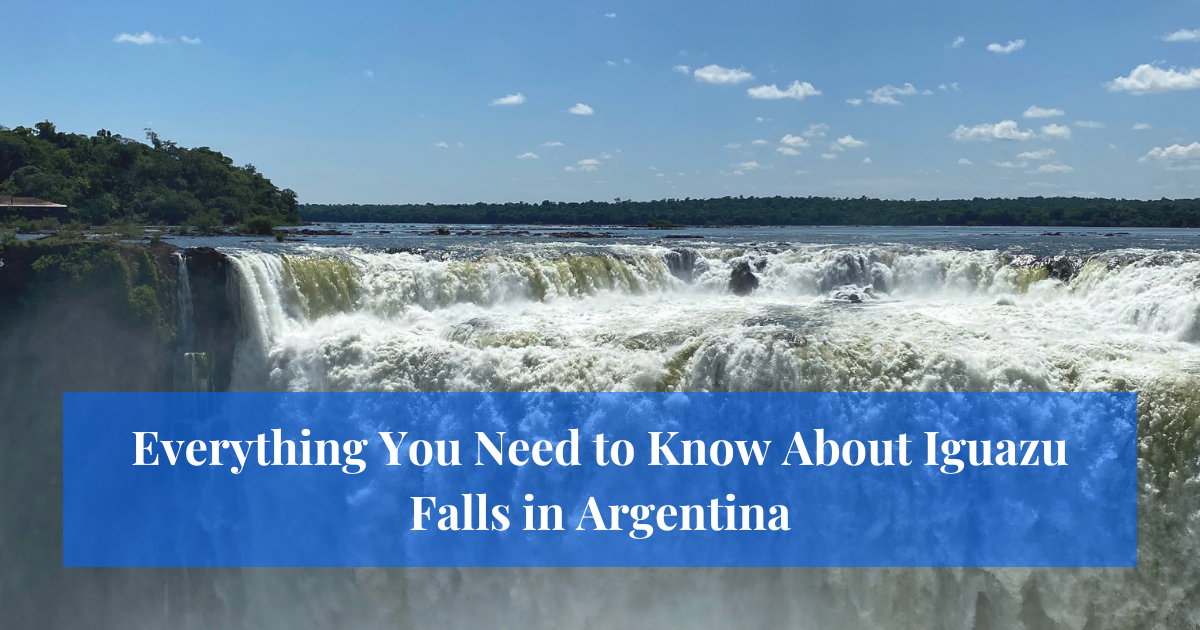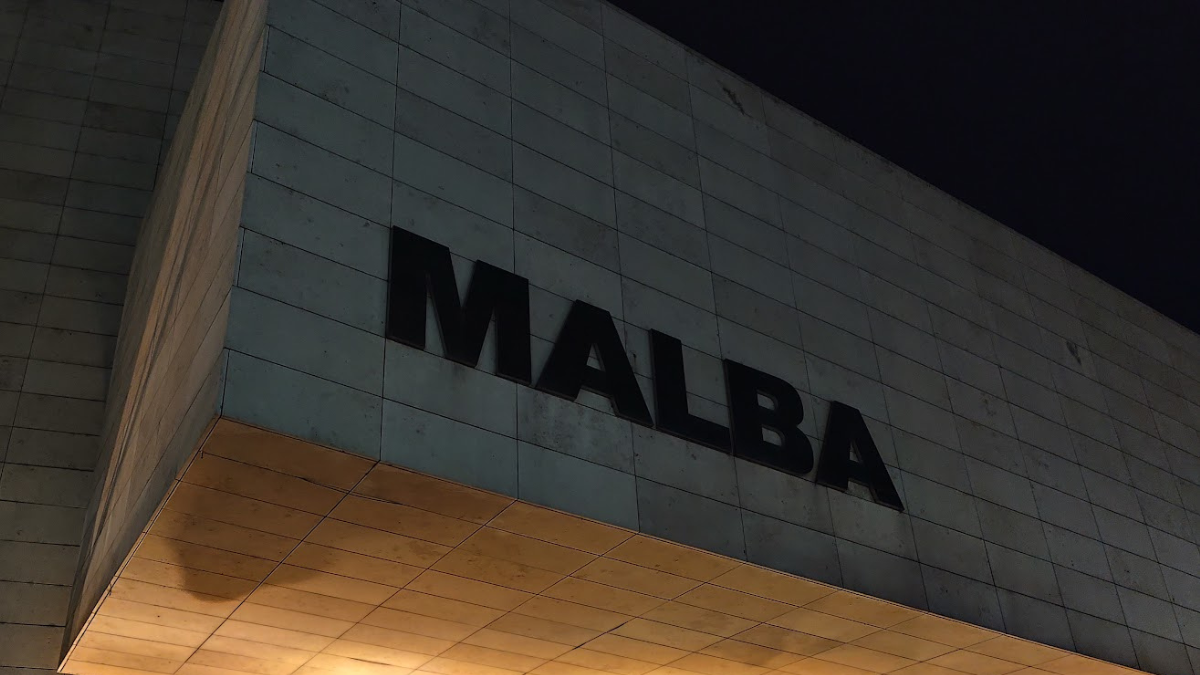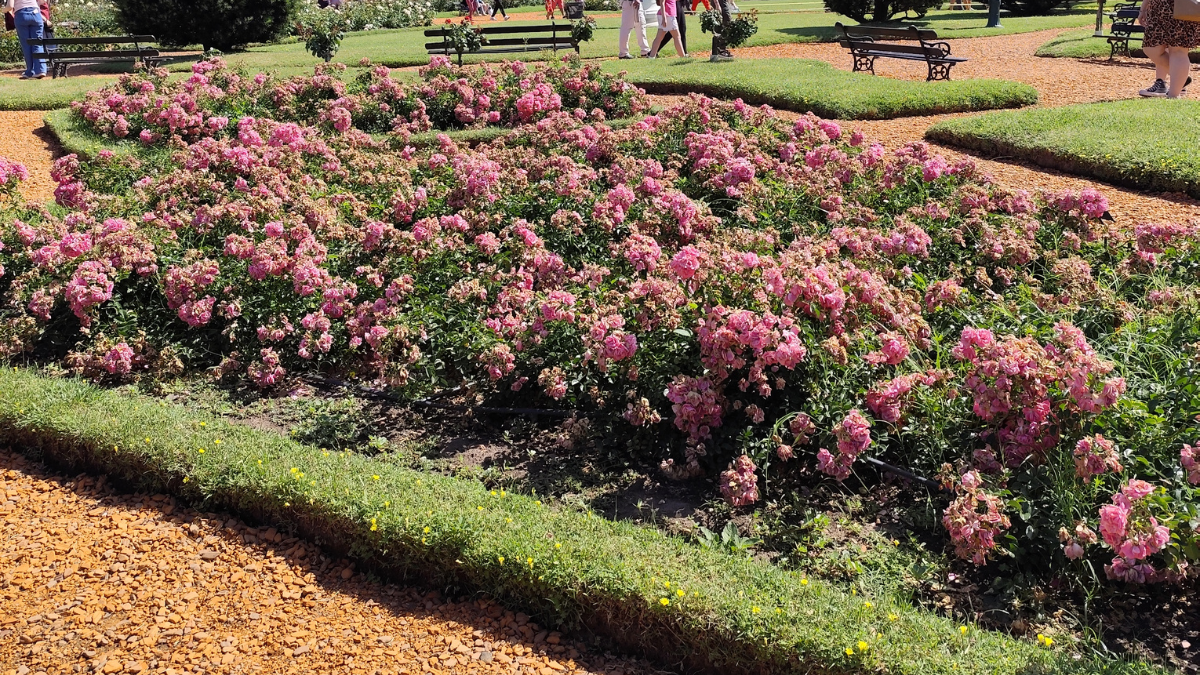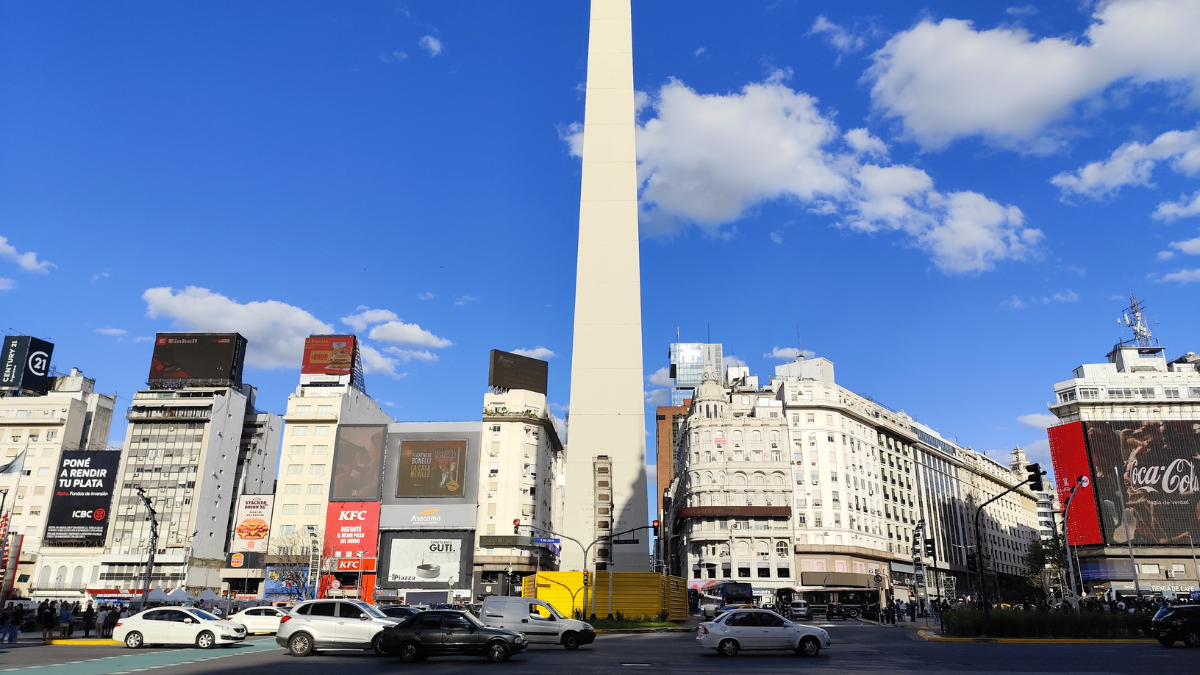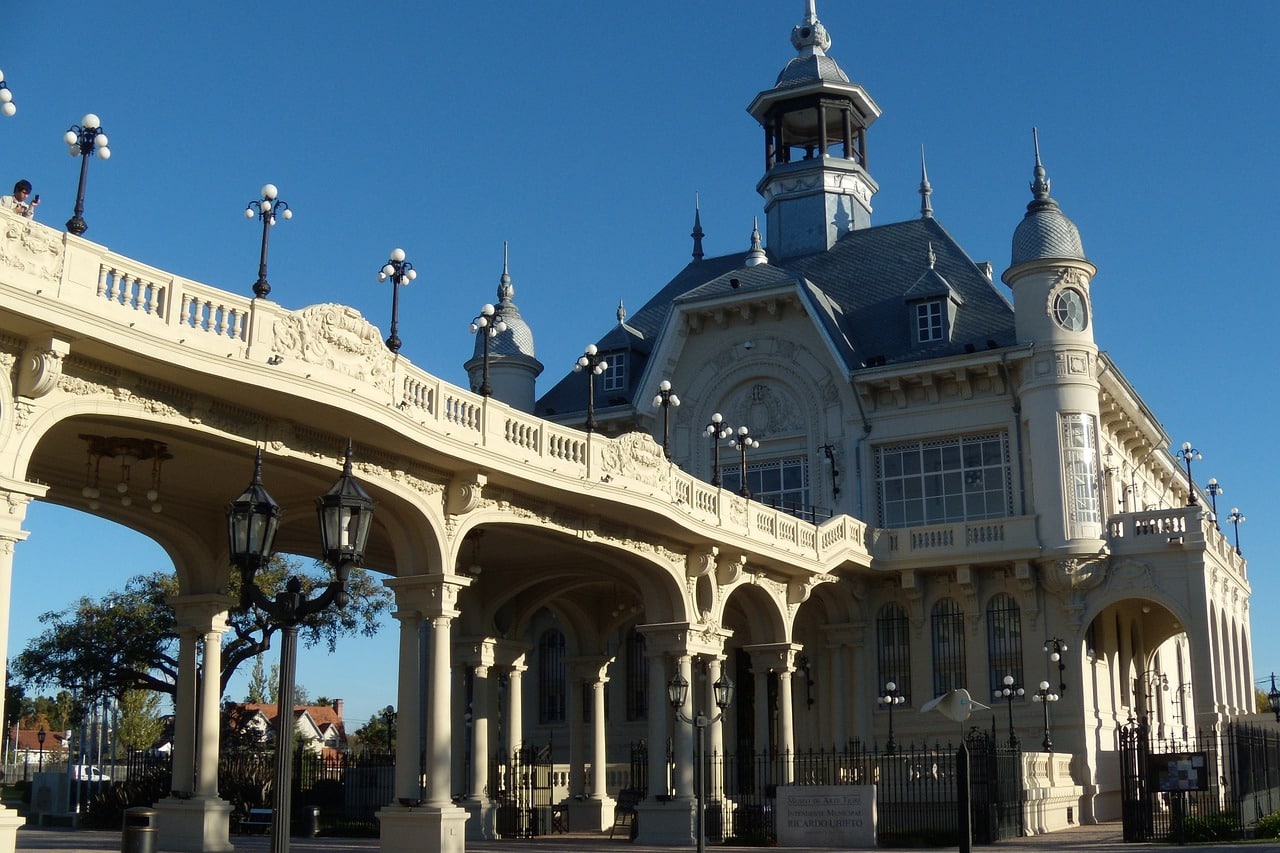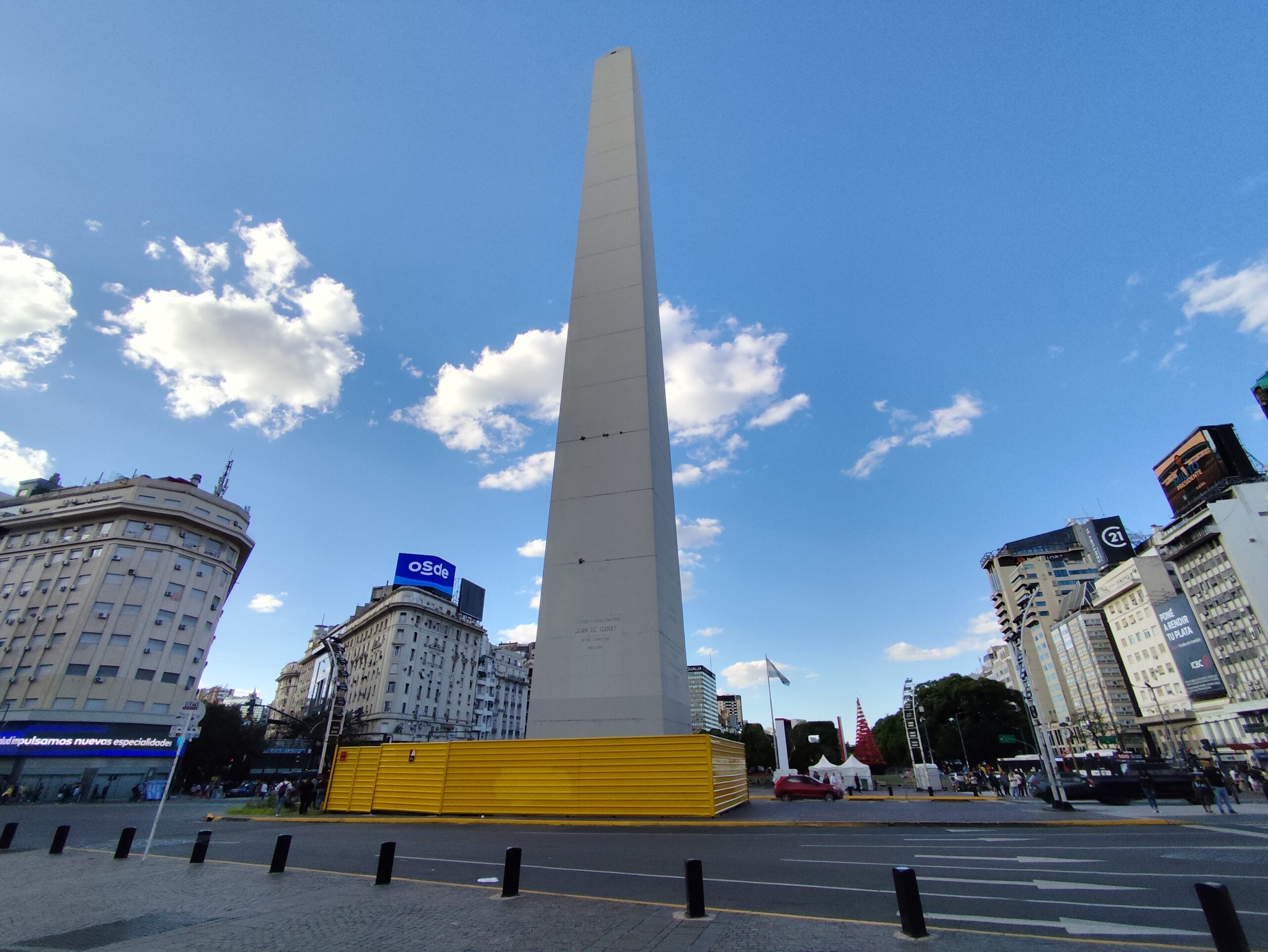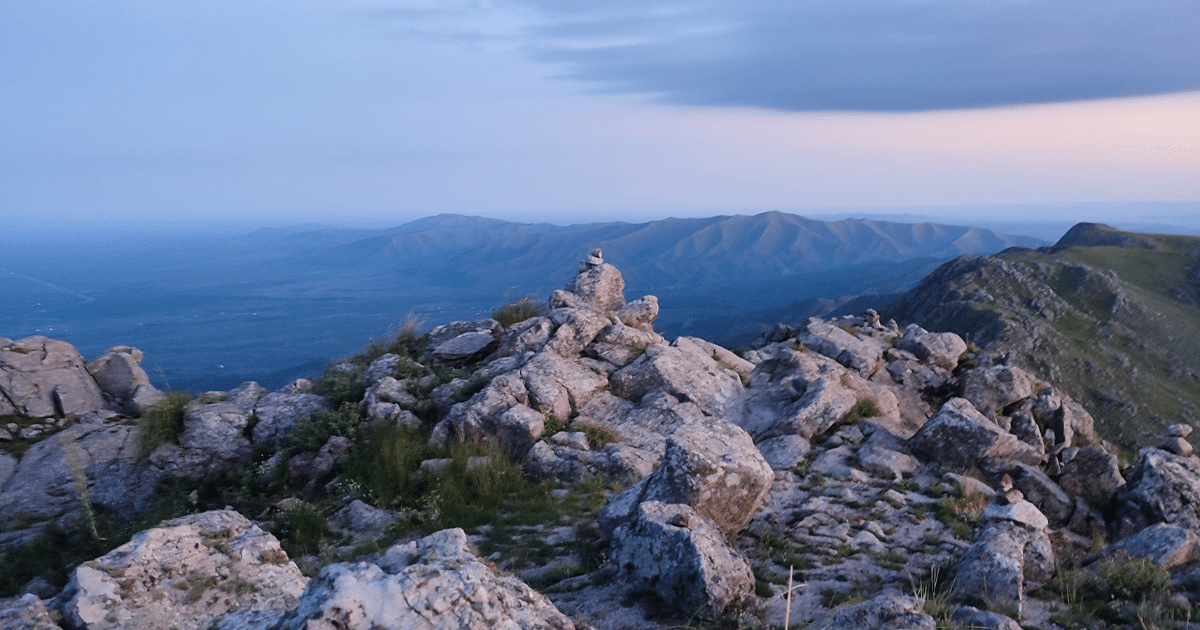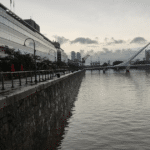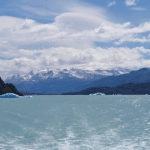Nestled on the border between Argentina and Brazil, the majestic Iguazu Falls is more than just a natural wonder—a breathtaking experience that draws visitors from all corners of the globe. With its thunderous roars and spectacular vistas, Iguazu Falls is not only one of the most impressive natural sites in the world but also a testament to the power and beauty of nature. This guide will walk you through everything you need to know to plan your visit, from exploring the lush trails of Iguazu National Park to pinpointing the best time to witness the falls in all their glory. Whether you’re a seasoned traveller or a curious explorer, Iguazu Falls promises an unforgettable adventure.
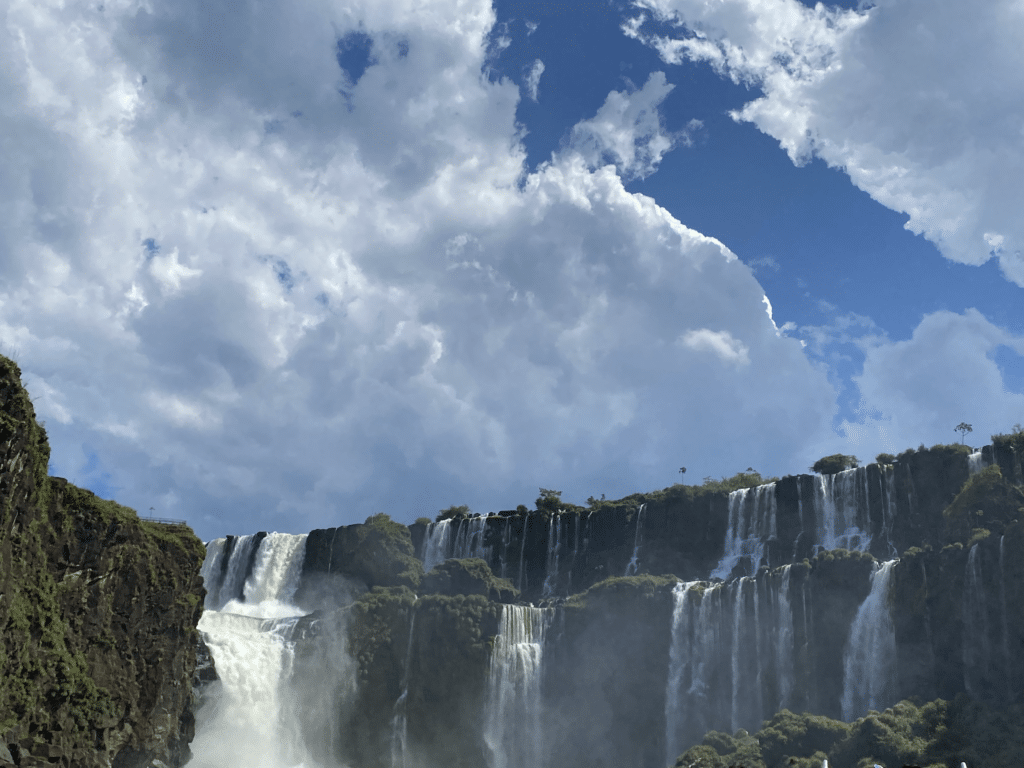
Table of Contents
Iguazu National Park
Nestled at the confluence of the Iguazu and Parana Rivers, the Iguazu Falls National Park is a breathtaking spectacle where nature’s grandeur unfolds in dramatic cascades and lush jungles. The name ‘Iguazu’ itself, derived from the Guarani word for “large water,” aptly describes the awe-inspiring stretch of waterfalls that span 1,500 meters, weaving through islands and islets before plunging into an ancient lava ravine created some 120 million years ago.
As a biodiversity sanctuary, the park is a vibrant heart of the Parana jungle ecoregion, safeguarding an array of flora and fauna unseen elsewhere. The temperature comfortably swings between 12°C in the cooler months and 32°C during the vibrant summers, making any time of year a perfect opportunity to visit. Recognized as a Natural World Heritage site in 1984 and declared one of the 7 Natural Wonders of the World in 2011, this park isn’t just a destination; it’s an experience.
The park dazzles with over 250 waterfalls, with the Devil’s Throat—a staggering 82-meter high cascade—a crown jewel among them. Accessibility is a key feature here, with pathways designed to accommodate wheelchairs and strollers, ensuring that everyone can immerse themselves in this natural wonder up close, regardless of mobility.
Visitors can traverse these wonders aboard the Ecological Train, which meanders through the jungle to the main trails with minimal environmental impact. This innovative approach is part of a broader commitment to sustainability that began in earnest in 2001 with a significant overhaul of the park’s infrastructure. This project, supervised by the International Union for Conservation of Nature, focused on rehabilitating previously degraded areas with native plant species and introducing a groundbreaking ecological wastewater treatment system to preserve the park’s delicate ecosystem.
The park is also a haven for birdwatchers, housing 418 different species of birds, including the mesmerizing sight of swifts darting through the Devil’s Throat. This avian diversity shares the park with other wildlife, including jaguars, a variety of fish, and turtles, creating a tapestry of life that adds to the allure of Iguazu Falls National Park.
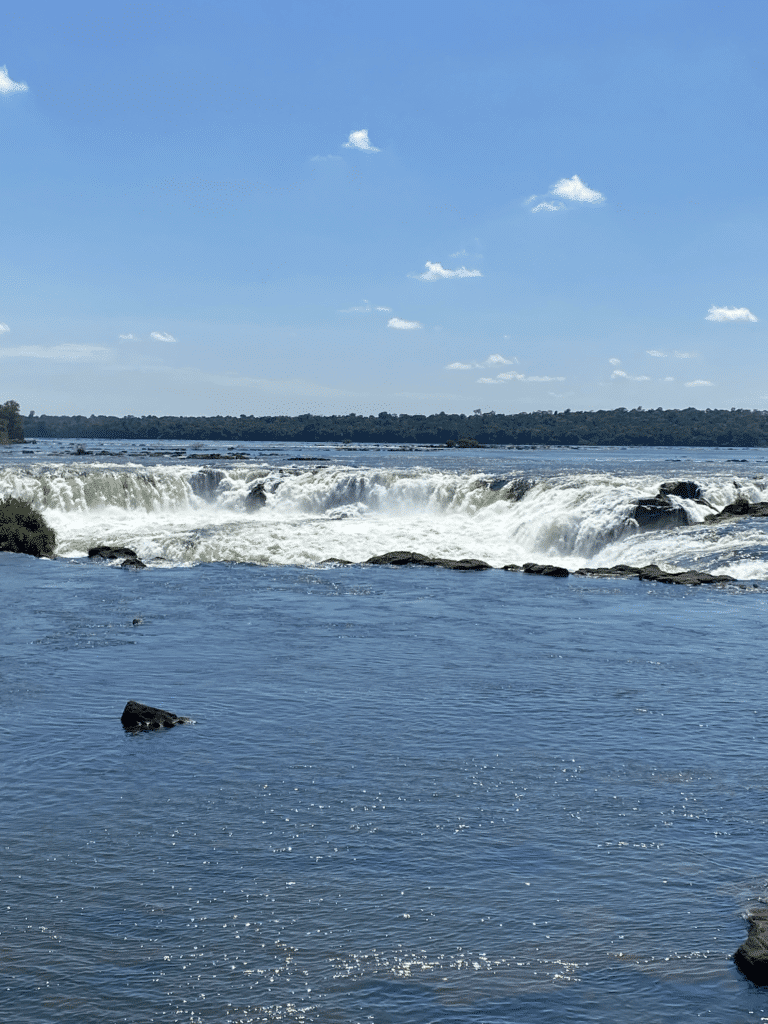
Lower Walk
The Lower Walk of Iguazu National Park offers an immersive experience through its verdant walkways, presenting a front-row seat to the area’s natural beauty and vibrant wildlife. Along this 1,700-meter journey, visitors encounter a range of breathtaking falls and the lively inhabitants of the Parana jungle.
Bosetti Fall
- Description: A vigorous cascade allowing up-close photography, offering refreshing mists and picturesque scenes.
- Accessibility: Near the viewing platform, enhancing visitor engagement.
Lanusse Fall
- Description: Features a unique balcony that positions you close to the waterfall, where you can feel its spray and see the forming rainbows.
- Accessibility: Well-accessible with viewing platforms.
Alvar Núñez Fall
- Description: Offers dual vantage points, both beneath and above the fall, surrounded by dense jungle.
- Accessibility: Mainly accessible, involves some navigation around natural features.
Chico Alférez Fall
- Description: A secluded waterfall with its unique appeal, nestled deep in the foliage.
- Accessibility: It requires a bit of exploration to experience its charm fully.
Dos Hermanas Falls
- Description: It consists of two similar waterfalls flowing into a clear natural pool with a rest area and balcony.
- Accessibility: Mostly accessible with minor obstacles.
Average Walk Time: Approximately 1 hour and 30 minutes
Accessibility: 90% via walkways, including some stairs
Upper Walk
The Upper Walk in Iguazu National Park is a pathway suspended over the jungle canopy. It provides stunning overhead views of the waterfalls and their lush surroundings, allowing visitors to see the park’s vibrant ecosystem from an elevated perspective.
Bosetti Fall
- Description: Known for its abundant flow and the picturesque rainbows created by its mist.
- Accessibility: Easily viewed from the walkway.
Dos Hermanas Falls
- Description: Twin falls that offer a spectacular view from above, set against panoramic jungle vistas.
- Accessibility: Viewable from the Upper Walk’s viewpoint.
Chico Alférez Fall
- Description: A more minor fall, visible from a secluded viewpoint along the walkways.
- Accessibility: Partially hidden, requires some exploration.
Adán y Eva Falls
- Description: Symbolically represents the primal beauty of nature, set in a serene location.
- Accessibility: Viewed from designated platforms.
Mbiguá Fall
- Description: Offers one of the most iconic views in the park, overlooking the Isle of San Martin.
- Accessibility: Accessible from a dedicated balcony.
San Martin Fall
- Description: The second most significant fall in the park, featuring a must-visit balcony for breathtaking views.
- Accessibility: Fully accessible through the tree-lined walkways.
Length: 1,750 meters
Average Walk Time: Approximately 1 hour
Accessibility: 100% via tree-lined walkways
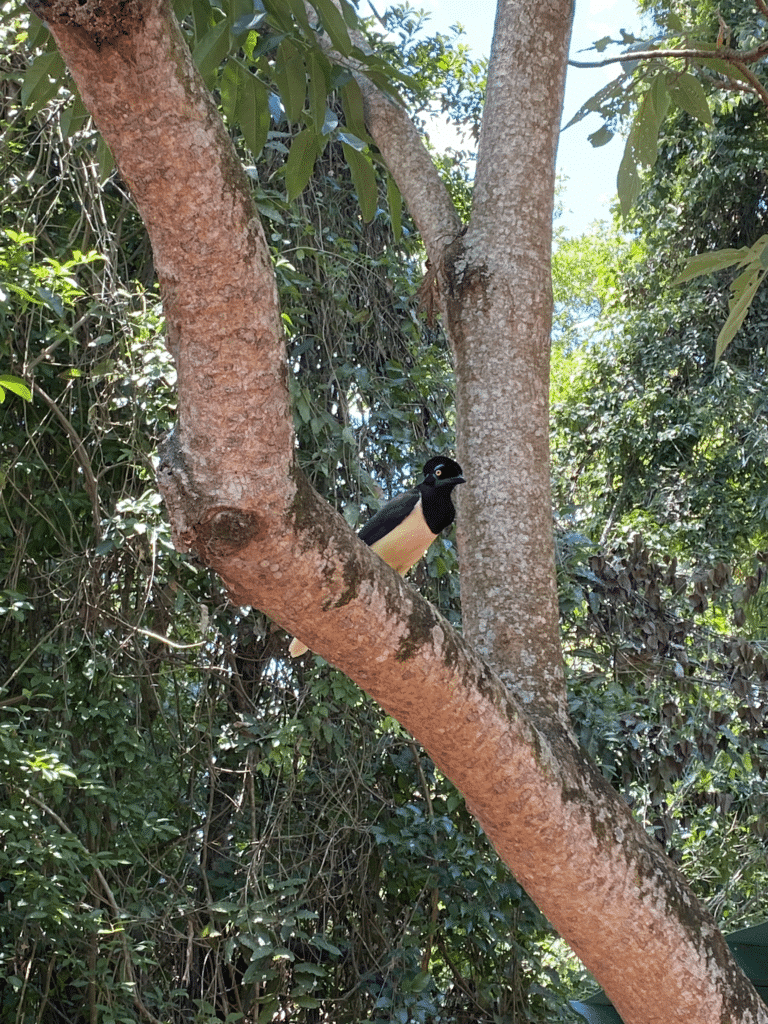
The Devil’s Throat
Embarking on the path to The Devil’s Throat, visitors are transported via the Ecological Train through a vibrant landscape teeming with wildlife. This segment of the park highlights the most iconic and powerful waterfall, The Devil’s Throat.
Features:
- Length: 2,200 meters (round trip)
- Average Walk Time: 2 hours
- Accessibility: 100% through walkways
Highlights:
- Balcony View: Over 150 meters of horseshoe-shaped falls, dropping 82 meters.
- Flow Rate: Approximately 1,800 cubic meters per second.
Transportation: Accessible by the Ecological Train or by a riverside walk.
Macuco Trail
The Macuco Trail invites visitors to delve into the heart of the jungle, offering a sensory journey through its lush greenery and diverse wildlife. Ending at the secluded Arrechea Fall, this path provides a unique experience of tranquillity and natural beauty.
Features:
- Length: 7,000 meters (round trip)
- Average Walk Time: 3 hours
- Trail Characteristics: A wild, flat path without services, immersed in nature.
Arrechea Fall:
- Height: 23 meters
- Description: Ends in a natural pool surrounded by rocks, accessible only by this trail.
Entry: Subject to weather conditions, open from 8 a.m. to 3 p.m.
Best Time to Visit Iguazu Falls
Visiting Iguazú Falls is a year-round adventure, but choosing the right time depends on what you want to experience during your trip. The falls straddle the border between Argentina and Brazil, each side offering a unique perspective and set of experiences. Understanding the climate and seasonal variations can help you decide the best time for VisitVisit.
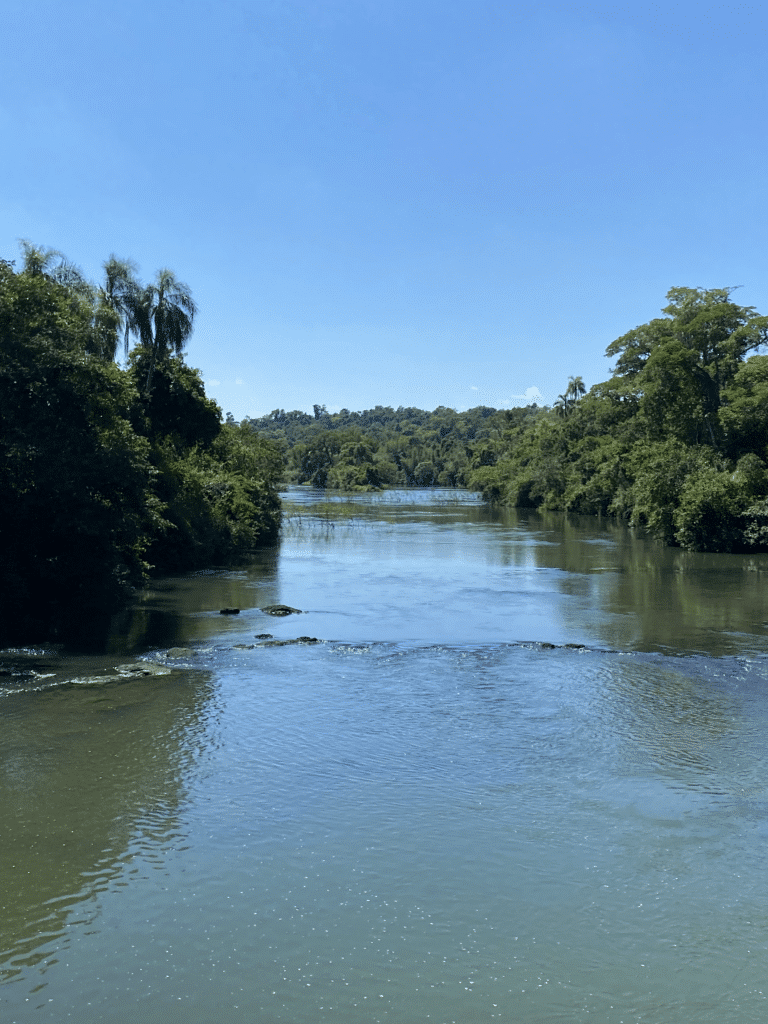
Climate Overview
Iguazú Falls is situated in a lush, subtropical region that sees a wide range of weather conditions influenced heavily by seasonal changes:
·Summer (December – February): These are the busiest months at the falls. The weather is hot and humid, and the region experiences its highest rainfall during this period. This is when the falls are most spectacular, as the water volume peaks, offering dramatic views and a thunderous display of nature’s power.
·Autumn (March-May): As the rain tapers off, the humidity decreases, and temperatures become more moderate, making it an ideal time for hiking and exploring the surrounding forests and wildlife. The water flow remains strong but less intense than in summer, allowing for different views of the falls.
·Winter (June – August): This season offers the coolest temperatures, which can be a refreshing break from the tropical heat. It’s an excellent time for outdoor activities like cycling and walking through the extensive network of trails. The falls are less voluminous, which can expose more of the rock face and create a unique landscape.
·Spring (September – November): Following the dry season, the water levels are lower, and the falls reveal individual streams and cataracts. The exposed granite cliffs provide a stark contrast to the cascading waters. This period is perfect for photographers and nature lovers who want to capture the intricate details of the falls.
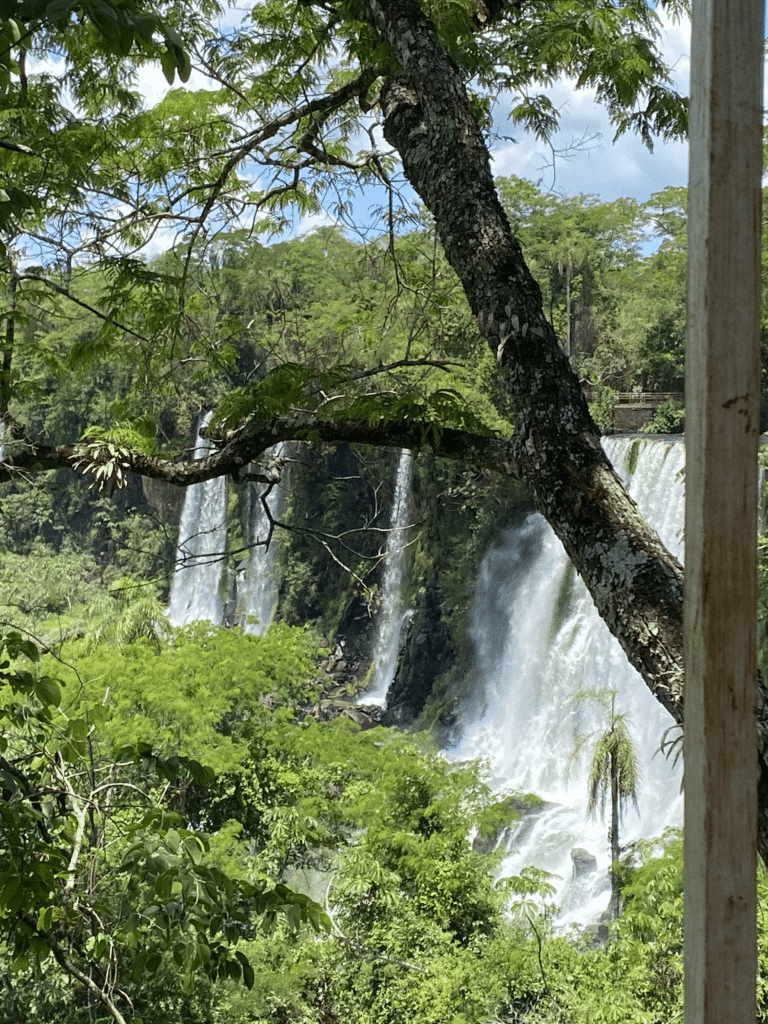
Choosing Your Visit Time
- For lush views and voluminous falls, visit during the summer when the falls are at their fullest.
- Opt for the cooler, drier months from March to August for outdoor activities and comfortable exploration.
- Consider a trip in the early spring or late autumn, when the water levels are lower, and the geological features are more pronounced, for unique landscapes and detailed views.
How to Get to Iguazú Falls
Iguazú Falls, situated on the border between Argentina and Brazil, is accessible from multiple points, offering travellers various options depending on their starting location. Whether you are beginning your journey in Argentina or Brazil, there are convenient routes to take you directly to the heart of this spectacular natural wonder.
From Buenos Aires
For those starting in Buenos Aires, the easiest and quickest way to reach Iguazú Falls is by air:
Air Travel:
- Jorge Newbery Airport (AEP) to Cataratas del Iguazú International Airport (IGR): This is the most common route, with multiple daily flights. The flight duration is approximately 2 hours.
- Ezeiza International Airport (EZE) to IGR: Ideal for those connecting from international flights.
- El Palomar Airport to IGR: Another option for domestic flights within Argentina.
Bus: From Retiro Bus Terminal to Puerto Iguazú City Bus Terminal: Several bus companies offer comfortable and scenic rides lasting about 18 hours for those preferring ground travel.
Private Vehicle: By RN 14: Driving from Buenos Aires to Puerto Iguazú can be a thrilling road trip, covering approximately 1,300 kilometres.
From Foz do Iguaçu, Brazil
Visitors coming from Brazil can start their journey in Foz do Iguaçu, which is just a short distance from the falls:
Bus: From Terminal Rodoviário Internacional de Foz do Iguaçu to Puerto Iguazú City Bus Terminal: Frequent bus services are available, making it a convenient option.
Private Vehicle: By Tancredo Neves International Bridge: This route directly drives into Argentina, connecting Foz do Iguaçu with Puerto Iguazú.
From Ciudad del Este, Paraguay
For those in Paraguay, Ciudad del Este provides another gateway to the falls:
Bus: From Ciudad del Este Bus Terminal to Puerto Iguazú City Bus Terminal: Buses run regularly between these two points.
Private Vehicle: Via the Friendship International Bridge: A quick drive over the bridge brings you directly into Puerto Iguazú.
Park Operation Times
Iguazú Falls National Park welcomes visitors every day of the year, offering ample opportunity to explore its natural beauty and breathtaking waterfalls. The park operates under the following schedule:
- Operating Hours: Open daily from 8 a.m. to 6 p.m.
This consistent schedule ensures that whether you plan a single-day excursion or a more extended visit, you can maximize your time experiencing all the park offers.
Rates
Admission Fees for Non-Residents of Argentina
- Standard Entry Fee: AR$ 20,000
Special Offers
- Second Consecutive Day Discount: Visitors who explore the park for a second consecutive day benefit from a 50% discount on the following day’s admission fee. This offer is ideal for those who wish to take their time discovering the many trails, viewpoints, and hidden gems of Iguazú Falls without rushing their VisitVisit.
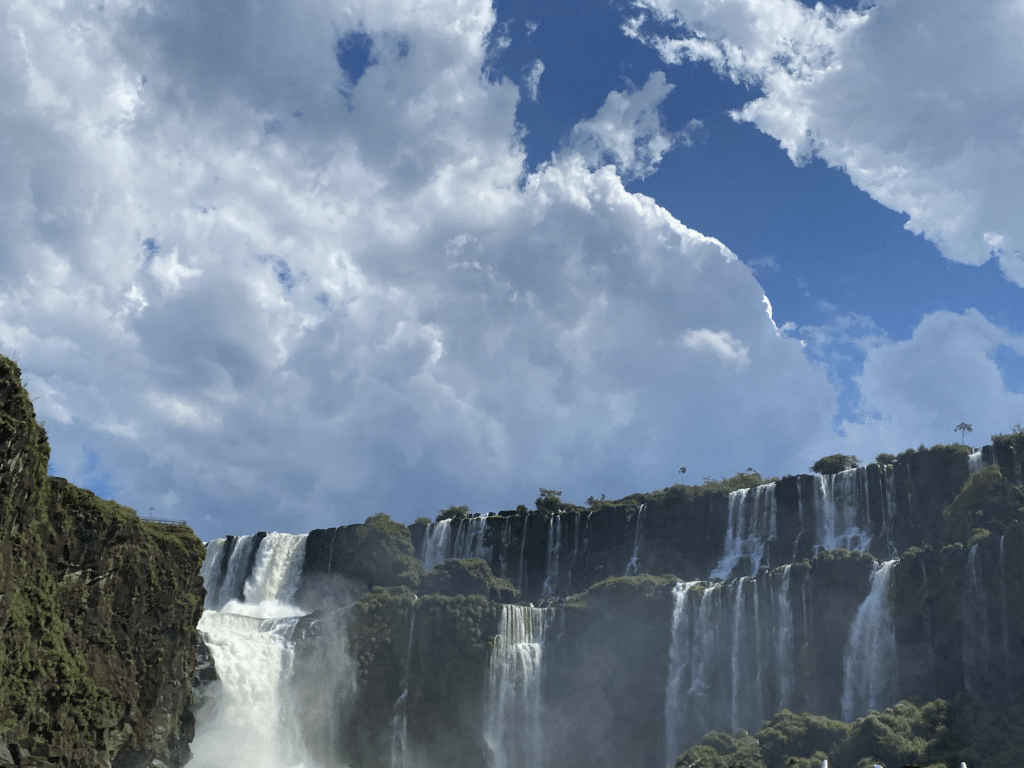
These accessible rates and the generous operating hours make Iguazú Falls National Park a must-visit destination for nature lovers and adventure seekers alike. Whether you’re marvelling at the thunderous power of the falls or quietly observing the diverse wildlife, the park offers a unique and unforgettable experience every day of the year.
As we wrap up this comprehensive guide to Iguazú Falls, it’s worth taking a moment to reflect on the unique allure of this natural wonder. Visiting Iguazú Falls isn’t just about witnessing the raw power of water plunging from great heights—it’s about experiencing a place where nature’s majesty is palpable, every sense is awakened, and the spirit of adventure comes alive.
So, if you’re seeking an escape that combines adventure, nature, and culture in one compact package, Iguazú Falls should be at the top of your list. Whether you’re a solo adventurer, a family looking for a memorable holiday, or a photographer searching for the perfect shot, Iguazú will not disappoint.

